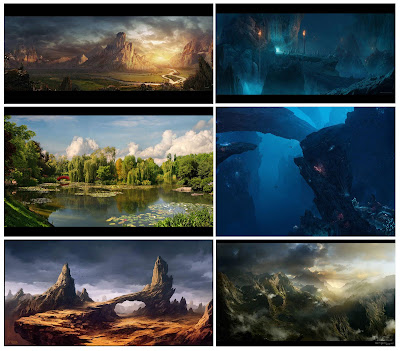I have aspirations to one day become a matte painter for digital films, and I want to learn a bit about the techniques involved and how the process has evolved over the years.
Matte painting is a technique that was initially brought into film making to allow the directors to film in an environment that would otherwise be too expensive or impossible to build. Traditionally matte paintings were done by artists using paint or pastels on a large sheet of glass, which would then be integrated with live action footage. Its first known use was in 1907. However, the development of the digital age has allowed this technique to become much more advanced and helping filmmakers create films with seamless transitions and breathtaking scenery.
Below are some examples of Matte Painters' works from http://www.mattepainting.org/ . This is a very useful website to refer to for inspirational pieces.
These images are examples of digital matte paintings. They are inspiring to look at in terms of scenery, but also for technical ability. The artist has had to consider many things during the creation of each of these images. Light is one of the most important things an artist of this sort must consider. It aids the illusion of realism, as well as creating an atmosphere throughout the piece. I am very interested in the underwater piece above, as I am currently considering creating my own underwater scene. I also like the rock landscape bottom left as this piece looks slightly rougher when viewed on a large scale. This suggests the technique used and the painstaking effort the artist put into the work.

No comments:
Post a Comment